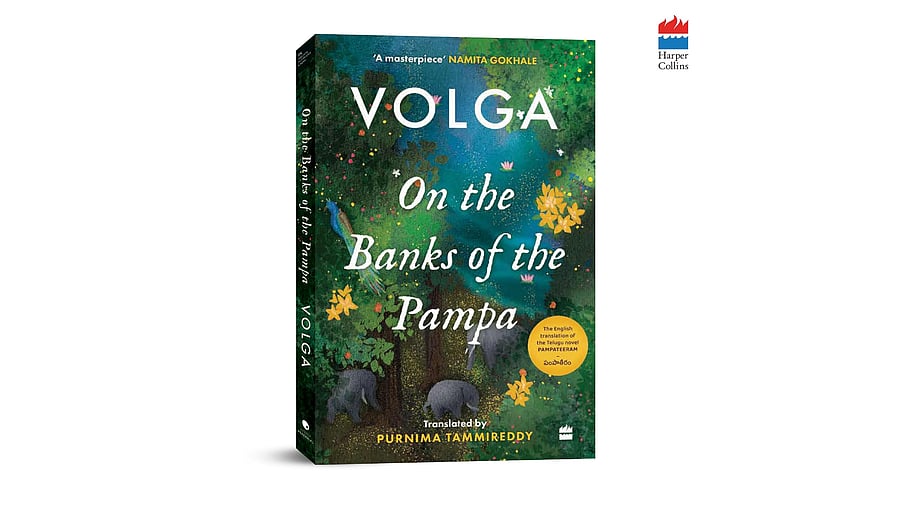
On The Banks Of the Pampa
On the Banks of the Pampa by Volga focuses on Sabari, bringing to the forefront a character briefly mentioned in the Ramayana. In this tale, Sabari, the mystic, ascetic and sage who dwells in the forest, is given a detailed backstory. And while she is serene when she meets Lord Rama, the shadows of her past have shaped her.
The forest is evoked through strong and deliberate prose, and Sabari herself is a symbol of resilience through it all. Translated from the Telugu by Purnima Tammireddy, the novella recounts Sabari’s journey from enslavement under a predatory state to her self-chosen life on the banks of the Pampa River. The forest shelters her, gives her sanctuary, and allows her to turn to spirituality and wisdom in her ashram. The story engages with themes of caste, ecological stewardship, and the sheer force of will of the forest dwellers, who try to hold their own against the incursions of the kingdom. The narrative is short, at a little over 120 pages, although it is grand in scope and theme.
Sabari is transformed from an escaped slave to a sage, with the forest being her backdrop and home. It is a living presence with its trees, animals, and clear river water. Sabari is elderly, and the events take place right before the appearance of Lord Rama for the most part, but there are also timeline shifts as her childhood and upbringing are brought to the forefront as she reminisces. Her experiences are sharp and brutal, and the novella’s feminist focus is couched in ecological explorations.
The forest communities attempt to preserve nature and its living ecosystem. The city dwellers are arrogant, always seeking to expand, and they care little for trees or animal life. The kingdom, to them, is an extension of God, and no forest dweller can hope to challenge that. Fields are destroyed, woodlands are cleared, animals are slaughtered, and those who oppose the rajyam are forced into slavery. There are tensions among castes, violence, mockery, and wanton destruction of families and homes.
And yet, there are certain moments of disorientation. The ecological message, while resonant, is sometimes delivered in a manner that feels more aligned with contemporary environmental activism than with the concerns of the period. The dichotomy between city-dwellers as destroyers and forest-dwellers as custodians, while effective in framing urgency, risks flattening nuance and breaking immersion. Similarly, there are also anachronistic references to barbed wire fences. The description of the slave camps appears more suited for a twentieth-century context than an ancient Indian one.
The idea of kingdoms being divinely ordained entities is also heavy-handed in the novel. The conflicts have a modern flavour to them, and the villains of the story are almost comically evil. There are some reinterpretations of Lord Rama’s forest exile as well, for here, it is not just banishment. He seeks to spread the idea of culture and civilisation among the original inhabitants of the south. Ravana is imagined to be what is akin to an aboriginal king, while the race of Rama believes they are superior, and therefore, duty-bound to civilise the barbarian. Indeed, one of the offers of the city folk to the forest dwellers is agriculture.
The book’s brevity allows it to maintain an almost uninterrupted tonal unity, and it does read smoothly. Each scene, whether of forest labour or remembered captivity, is weighted toward its thematic role.
Despite the anachronisms and somewhat surprising reinterpretations, there is a cadence to the prose and a feminist thread to the tale that makes it an approachable read, which is also a credit to the translator. There are some unexpected moments where the essence of the Ramayana is reinterpreted as a clash of cultures, one of the invader and one of the original natives, and there are times when there are too many ideas squeezed into the short narrative. Some characters, while retaining their essence, are also recast as wholly different individuals whose motives are questionable at times, but at the end of it all, they attempt to do what duty expects of them.
Overall, On the Banks of the Pampa is an intriguing work, succinctly told.